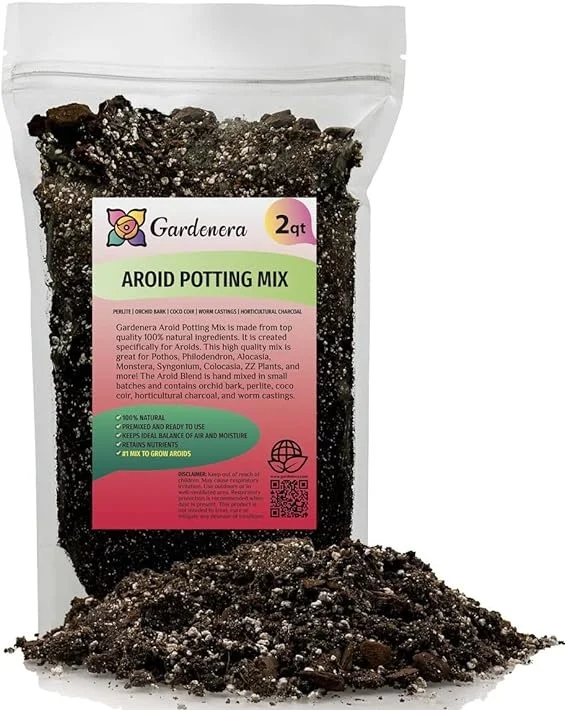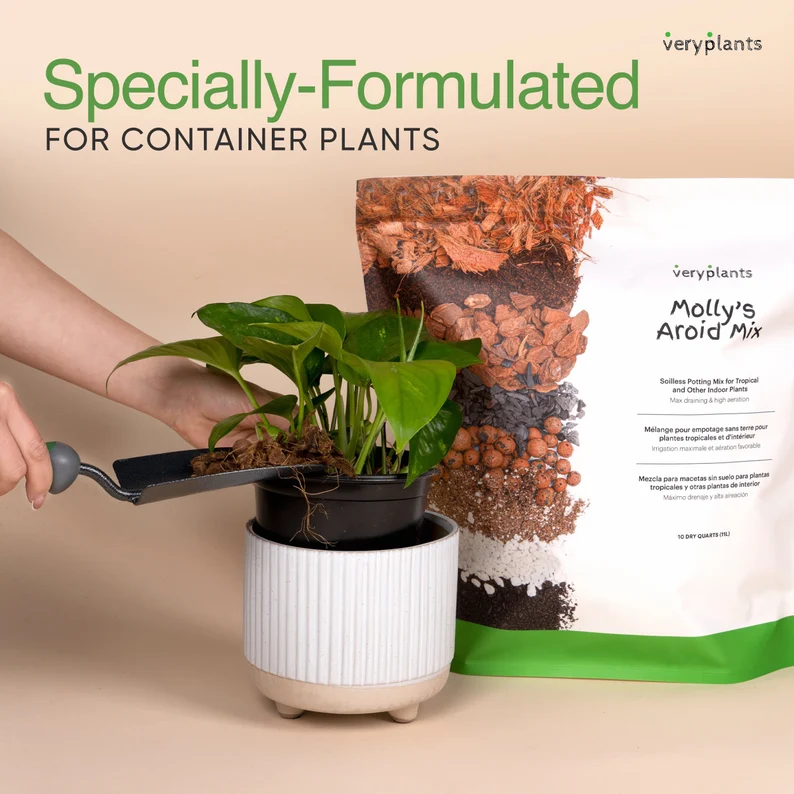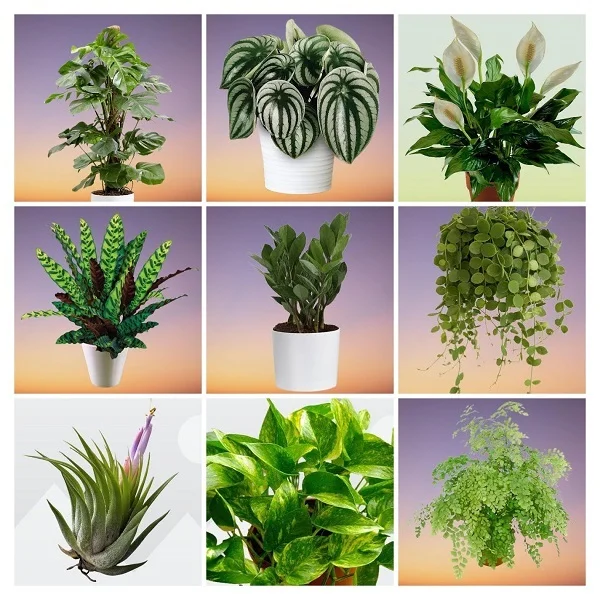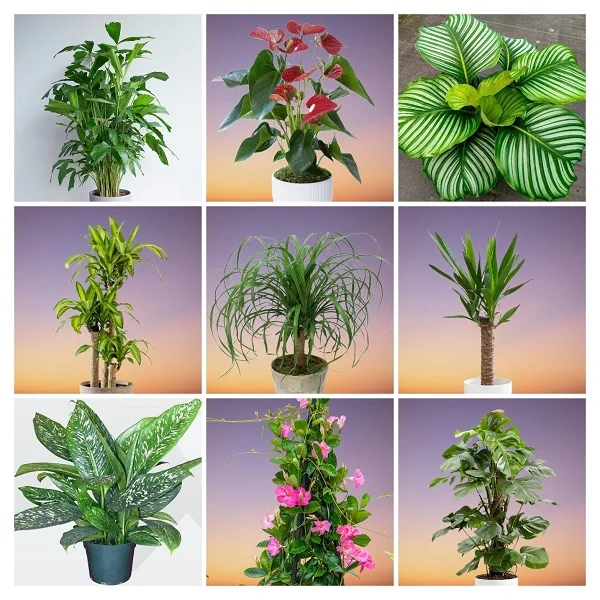How to Grow and Care for Anthurium brownii Indoors
Some links in this post may be affiliate links
Anthurium brownii flourishes in bright indirect light away from direct sunlight, warm and humid conditions and consistently moist, rich, well-drained, aroids soil coupled with monthly feeding in the growing season.
Anthurium brownii is one of the popular Anthurium varieties whose large, curly, ribbed, yellow-veined, heart-shaped leaves stand out and feel like a fiddle leaf fig in texture.
Anthurium brownii blooms and fruits year round, the blooms comprise of a long protruding spadix covered in spirals of tiny flowers, and the spathe hangs down below the spadix.
Anthurium brownii was collected by Gustav Wallis in 1876 and named for Nicholas Edward Brown (1849-1934) an English plant taxonomist and authority on succulents.
Anthurium brownii has a variegated variety whose leaves come with beautiful cream-yellow variegations which makes this plant an eye-catching centerpiece.
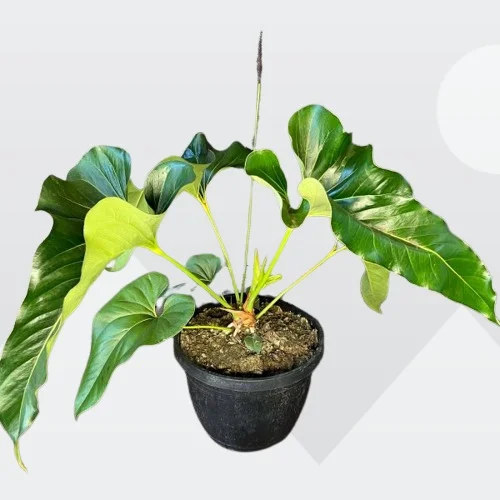
Botanical name: Anthurium brownii
Family: Araceae
Origin
Anthurium brownii is native to the tropical regions from Costa Rica through Panamá, and south to Colombia, Ecuador, and Venezuela.
Size
Anthurium brownii grows to a height of about 2-3 feet and the leaves can grow upto 2 feet long. It is among the large-leafed plants ideal for a bold statement in any space.
Air Cleaning
The Anthurium brownii is reknowned for its indoor air cleaning properties. The large leaf surface area is perfect for absorption of VOCs from the air.
Toxicity
Anthurium brownii like other Anthuriums is toxic to both humans and pets. They contain oxalate crystals which can cause digestive distress, breathing problems and skin irritation. Always wear gloves when handling the plant and wash your hands thereafter.
Where to Buy
If you would like to add this beauty to your collection, check them out on Etsy (Link to Etsy).
Anthurium brownii Care Indoors
Anthurium brownii blossoms in bright indirect light away from direct sunlight, average warmth of 16-270C, humidity of 60-80% and consistently moist, fertile, well-drained, aroids soil coupled with monthly feeding during the growing season.
Anthurium brownii requires pruning to keep it neat and tidy as well as minimize pest and disease infestations. Repotting is only ncessary when the plant becomes pot-bound. Keep reading for more on the best growing conditions and how to provide them.

Watering
Water Anthurium brownii liberally during the growing season while allowing the top 1-2 inches of soil to dry out between waterings and keep soil consistently moist.
Decrease watering in the cold season as growth is reduce to maintain the soil slightly moist but do not let the soil dry out completely.
Use tepid, chlorine-free water as the plant is sensitive to chlorine and other chemicals dissolved in water. Avoid wetting the foliage as it can lead to fungal diseases.
Ascertain that the pot has a drainage hole to prevent the soil from getting soggy as it can lead to root-rot and eventual death of the plant.
Light Requirements
Anthurium brownii grows best in bright indirect light. A curtain-filtered sunny window is perfect for this plant. Keep it away from direct sunlight to avoid scorching of the leaves.
Where the natural lighting is not adequate, consider investing in a grow light to supplement it to promote a lush growth
Rotate the pot regularly to ensure that the plant receives light on all sides for even growth and prevent leggy growth.
Temperature and Humidity
Anthurium brownii requires an average warmth of 16-270C to thrive. Keep it away from cold drafts to avoid sudden changes in temperature.
Anthurium brownii requires high humidity of 60-80%. To raise humidity, set the pot on a wet pebble tray or use a closed terrarium.
Clean the leaves by damp-wiping with a soft cloth to get rid of dust and reduce pest infestations. Avoid leaving water drops on the leaves as it may cause fungal infestations.
Potting Soil
The best soil for Anthurium brownii should be rich in organic matter and free-draining to prevent it from getting soggy while providing the required nutrients. Most potting mixes designed for aroids are ideal for this plant.
Fertilizer
Feed Anthurium brownii every 4 weeks during the growing period with a balanced, liquid fertilizer. Withhold feeding in the cold season as growth is minimal and feeding at this time can lead to fertilizer burn.
Regularly flush out accumulated salts in the soil by running a stream of water through the soil until the water comes out through the drainage hole. Allow it to run for a few minutes and repeat the process several times.
Repotting
Repot Anthurium brownii every 2-3 years at the beginning of the growing season. Use a pot one-size larger and free-draining soil that is rich in organic matter.
Ensure the pot has a drainage hole to avoid getting soggy soil as it can lead to root-rot and eventual death of the plant. Check out these self watering planters with drainage hole on Amazon.
Pruning
Pruning Anthurium brownii is easy. Remove yellow and dead leaves to maintain the plant neat and tidy as well as minimize pest and disease infestations.
Cut the leaves at the base of the stem with a sharp sterlized knife or scissors to avoid unnecessary injuries which can lead to disease infestations. Remove any dead and wayward leaves to maintain the shape of the plant.
Propagation
Anthurium brownii can be propagated during the growing season from from splits by plant division.
How to propagate Anthurium brownii by plant division
Water the Anthurium brownii thoroughly at least one day before to make it easier to divide and also hasten establishment. A well hydrated plant suffers less shock and takes a shorter time to take root.
Take the plant out of its pot and carefully divide it into sections by pulling apart the roots. Ensure each section has adequate roots to hasten establishment.
Select a 6 or 8 inches pot and ensure that the pot has a drainage hole to prevent the soil from getting soggy as it can lead to rotting.
Fill the pot with loose, free-draining potting mix and make a hole in the center of the pot. Ensure that the hole is slightly wider than the root base of the section.
Place the section in the previously made hole and lightly firm the soil around the base while taking care not to bury it too deep; maintain the section at the same soil level it was in the previous pot.
Water the soil thoroughly and place the set up in a well-lit, warm place until the new plant is well established after which you can begin routine care.
Related: How to Propagate Anthurium Plants by 5 Easy Methods
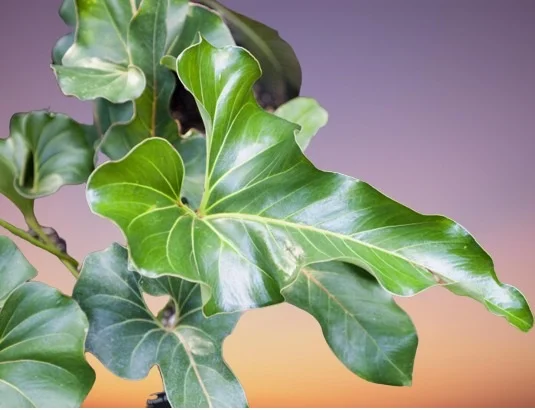
Anthurium brownii Problems
Anthurium brownii problems include brown leaves, yellow leaves, drooping leaves, brown leaf tips, leaf spots, pests and diseases among others. Keep reading for more on these problems, their remedies and solutions.
Brown leaves
There are several causes of brown leaves in Anthurium like incorrect watering, too little light, improper feeding, poor quality soil, being root-bound, pests, diseases, hot temperatures, age among others.
Pests
The common pests in Anthurium brownii are aphids, spider mites and fungus gnats. Isolate the affected plant to prevent spread to other houseplants and treat it with neem oil or insecticidal soap as directed by the manufacturer.
Diseases
Anthurium brownii is prone to root-rot which is promoted by soggy soil brought about by poor soil drainage. To prevent root-rot disease, maintain the soil moist but not soggy by ensuring that the pot has a drainage hole and the soil is free-draining (drains easily).
Drooping leaves and stems
There are four possible causes of drooping leaves and stems in Anthurium brownii. One possible cause of drooping leaves is low humidity. Set the pot on a wet pebble tray to raise humidity or place it in a well-lit bathroom or other moist areas in the home.
The second possible cause of drooping leaves and stems in Anthurium brownii is incorrect watering; either underwatering or overwatering. Maintain the soil moist at all times during the growing season and never allow the soil ball to dry out completely. Learn more on how to water houseplants the correct way.
The third possible cause of drooping leaves and stems in Anthurium brownii is too high temperature due to exposure to direct sunlight. Protect the plant from direct sunlight by filtering the light with a sheer curtain.
The fourth possible cause of drooping leaves and stems in Anthurium brownii is pests and diseases infestation. Regularly inspect your plant and take timely control measures for these pests.
Yellow leaves
There are many causes of yellow leaves in Anthurium brownii. One possible cause is soggy soil. Maintain the soil moist but not soggy by ensuring that the pot has a drainage hole and that the soil is free-draining.
The second possible cause of yellow leaves in Anthurium brownii is cold draughts (cold air). Protect the plant from cold drafts or place it away from windy doors and windows.
Brown leaf tips
There are two possible reasons for brown leaf tips in Anthurium brownii. One possible reason is that the air is too dry especially where the room temperature is too high.
To increase humidity, set the pot on a wet pebble tray or use a cool mist humidifier. You may grow the plant in a well-lit bathroom and other moist areas in the home.
The second possible reason for brown leaf tips in Anthurium brownii is soggy soil. Maintain the soil moist but not soggy by ensuring that the pot has a drainage hole and that the soil is free-draining (drains easily).
Brown leaf spots
The brown leaf spots are sunburn marks caused by exposure of the Anthurium brownii to direct sunlight. Move the plant to a shaded place or use a curtain to filter the light.
You liked it? Share on social media.
Related Content
Amazon Associates Disclosure
Homeplantsguide.com is a participant in the Amazon Services LLC Associates Program, an affiliate advertising program designed to provide a means for sites to earn advertising fees by advertising and linking to amazon.com.
